Inside Human Rights
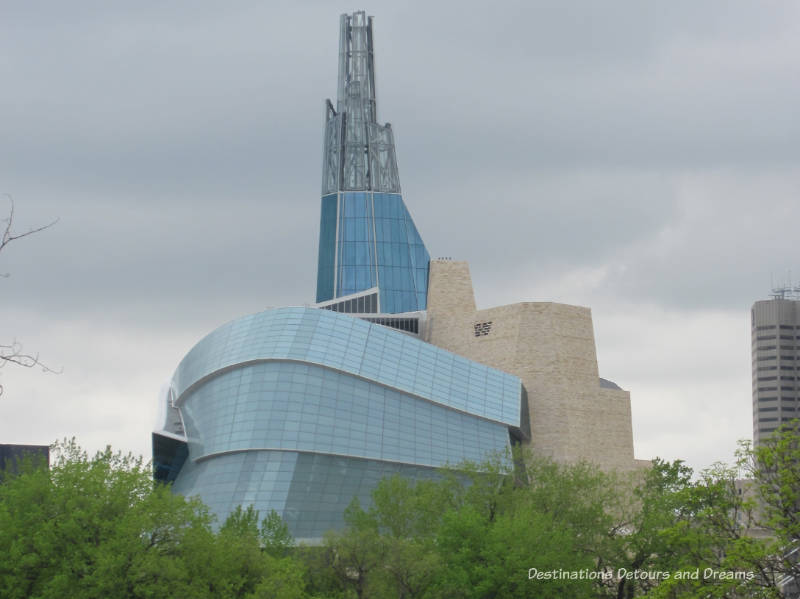
Touring the first galleries opened at the Canadian Museum for Human Rights
After years in the making, on September 20, 2014, the Canadian Museum for Human Rights in Winnipeg, Manitoba opened its doors with half of the galleries still under construction. Group tours provided visitors access to the completed galleries. I was on one of those tours and found the experience inspiring and thought-provoking.
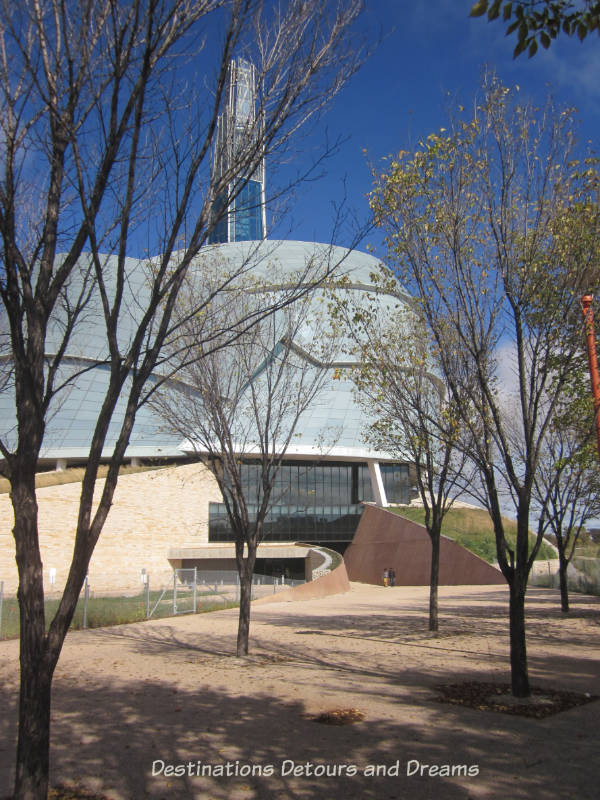
My visit began by walking down a slight decline to the museum and into the Bonnie and John Buhler Hall, a large, darkened room where the tour began. The decline and dark room symbolizes starting the journey from the middle of the earth. At one point during the tour, our guide asked the group how we felt while we waited in that room for the tour to begin. Many commented on the darkness or a feeling of being closed in. I also felt a quiet reverence and solemness.
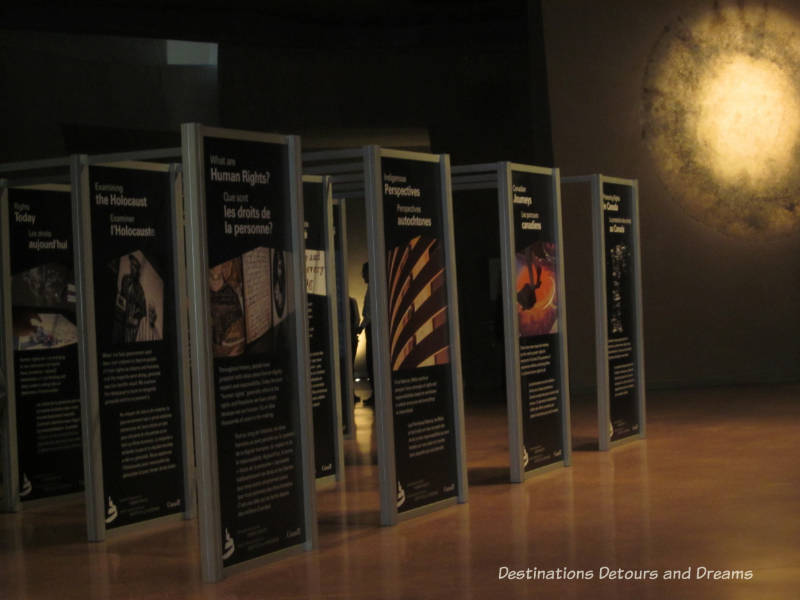
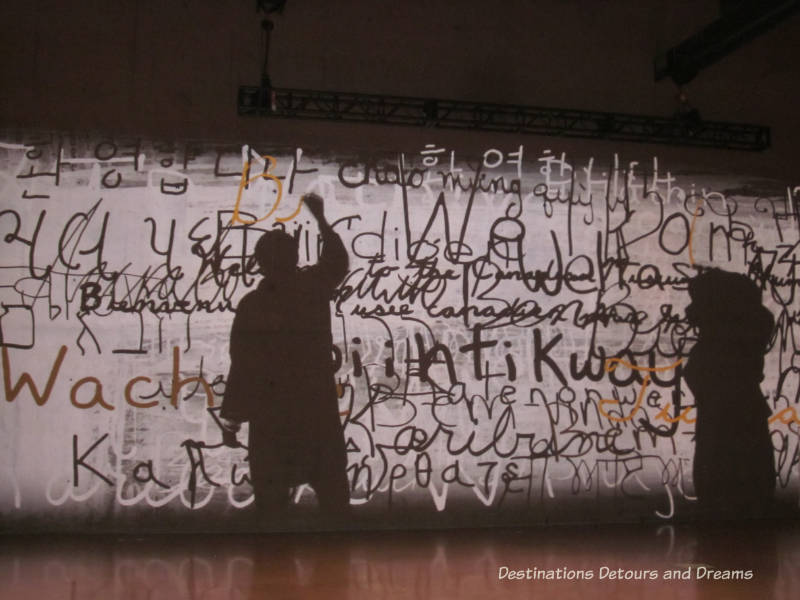
Projected against one wall in the Bonnie and John Buhler Hall are outlines of people writing “Welcome” in many languages
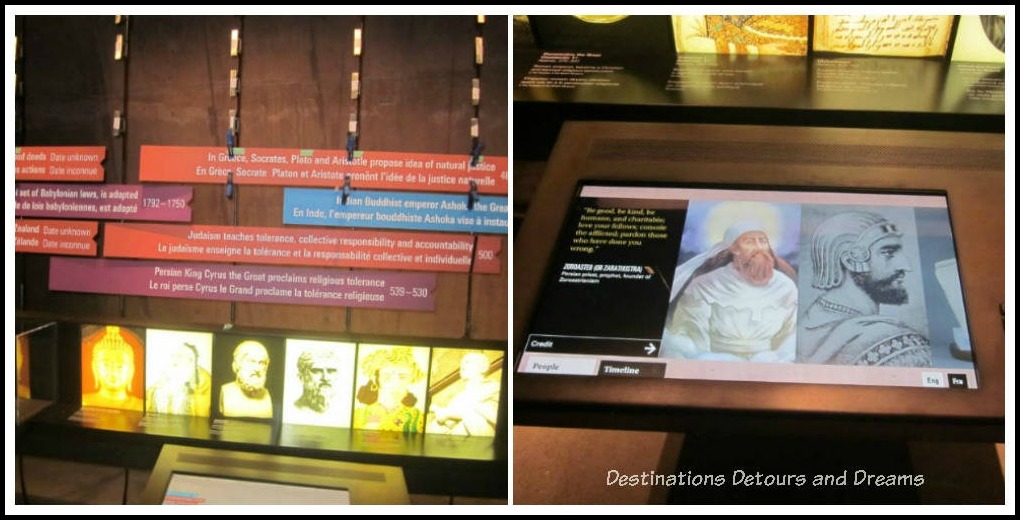
The first gallery we entered, What are Human Rights?, is considered an introductory gallery. It contains a human rights timeline dating back 4000 years. The information can be read on hanging boards or delved into through interactive screens.
The following description of the gallery appears on the wall as you enter:
Throughout history, people have grappled with ideas about human dignity, respect, and responsibility. Today the term “human rights” generally refers to the rights and freedoms we have simply because we are human. It is an idea thousands of years in the making.
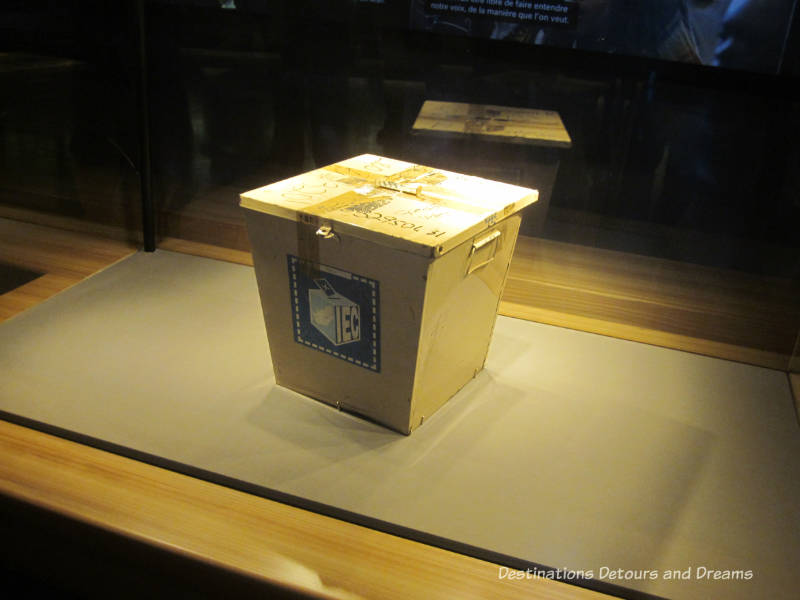
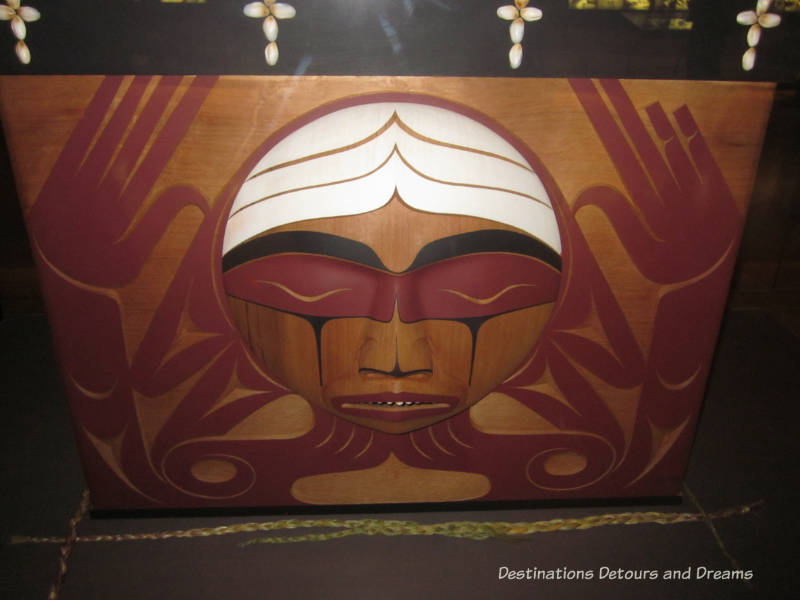
On exhibit in the What are Human Rights? gallery is the Brentwood Box, a box meant to reflect the strength and resilience of residential school survivors and their descendants, and honour those survivors who are no longer living. The box traveled across Canada with the Truth and Reconciliation Commission as personal stories were collected. (Update May 2023: The box is now in permanent residence at the National Centre for Truth and Reconciliation on the grounds of the University of Manitoba in Winnipeg.)
As early as the 1870s and as late as 1966, many First Nations, Métis, and Inuit children in Canada were forced into residential schools, often against parental wishes. Many were forbidden to speak their own language or practice their culture. In a number of schools, physical and sexual abuse also occurred. In 2008 the Truth and Reconciliation Commission was formed to learn and document the truth of what happened as a step toward reconciliation and healing. They examined records and collected testimonies from school officials and residential school survivors and their families and communities.
Adjoining the What are Human Rights? gallery is the Indigenous Perspectives gallery, another introductory gallery. It provides an introduction to the indigenous view of human rights through art, displays on the walls, and a short film in a 360-degree theatre. Nothing was mentioned in this gallery about the indigenous peoples’ struggle for human rights in Canada. I asked one of the guides about that and was told the stories are told in other galleries not yet opened. The Break the Silence gallery will focus on mass atrocities.
Words are powerful. When people dare to break the silence about mass atrocities, they promote the human rights of all people.
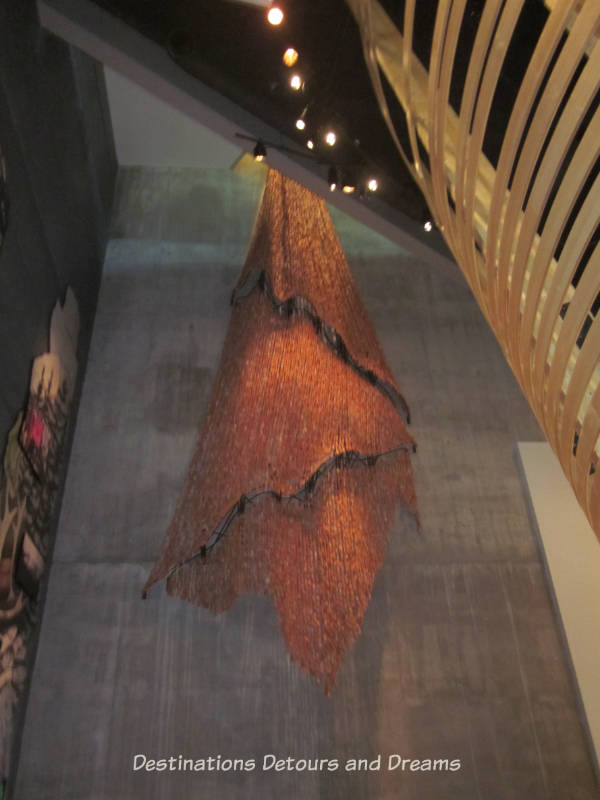
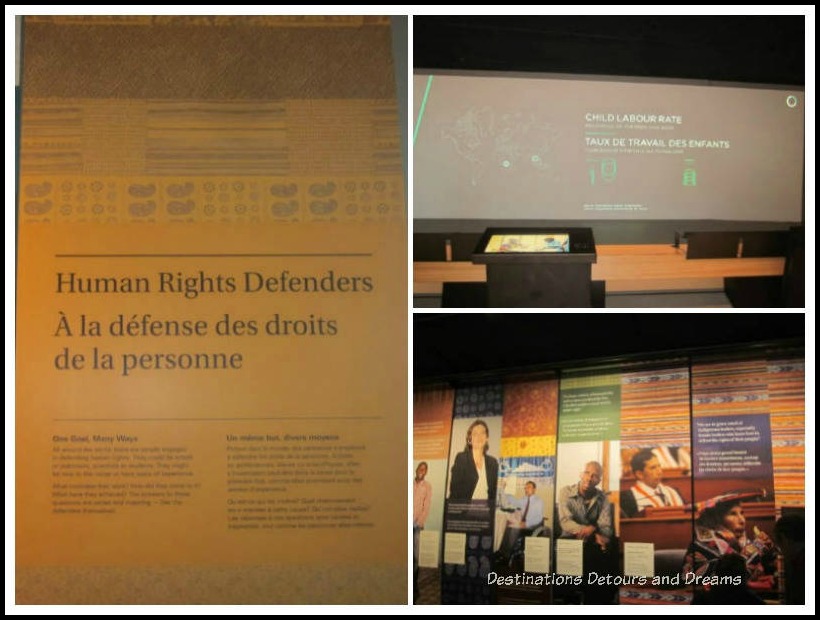
Our guide described the Rights Today gallery as a “flip” gallery showing there is more than one side to things. Projected along one wall are stories of current human rights abuses and tweets from the museum. A wall on the other end of the gallery highlights modern day human rights defenders, people making a difference.
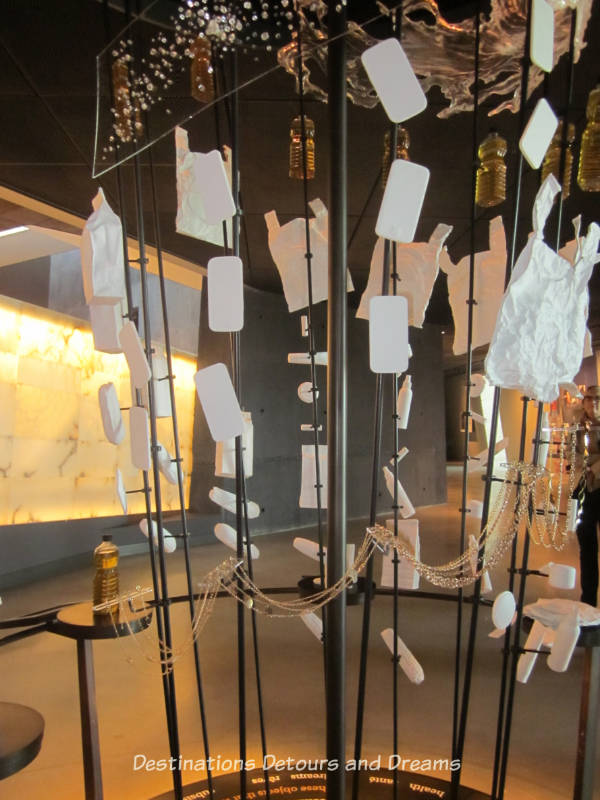
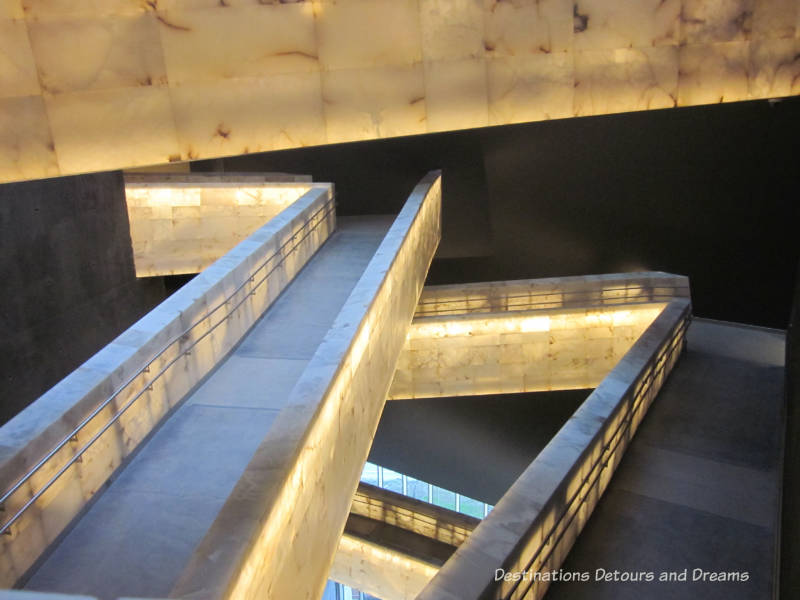
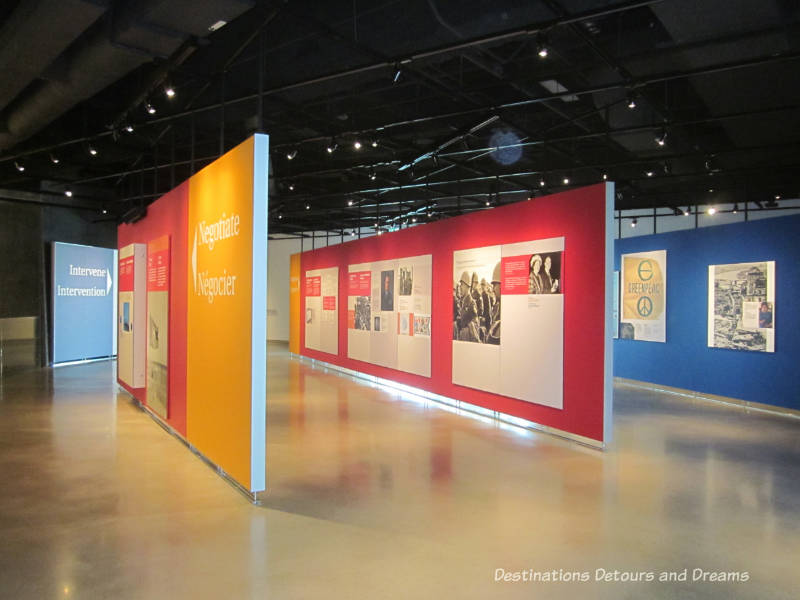
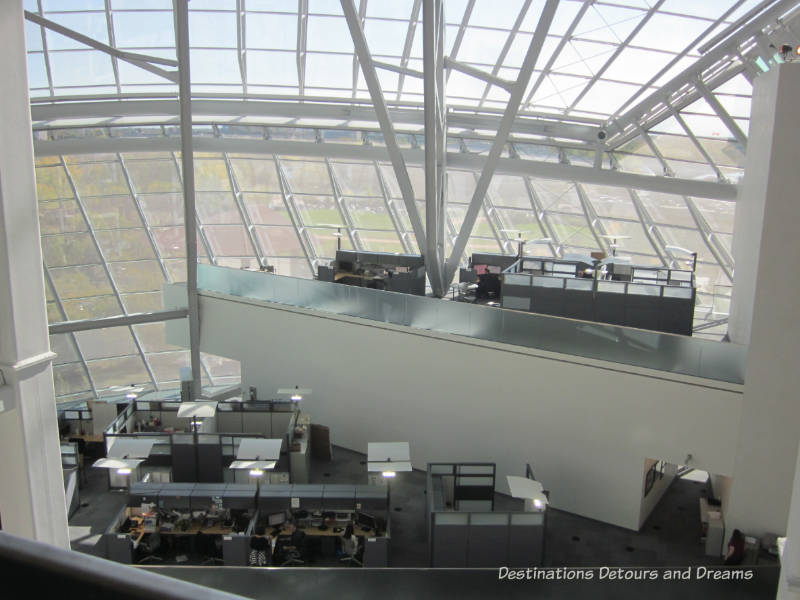
The last gallery in the museum is Inspiring Change. This gallery focuses on what positive change for human rights looks like and encourages visitors to contemplate their own roles in human rights.
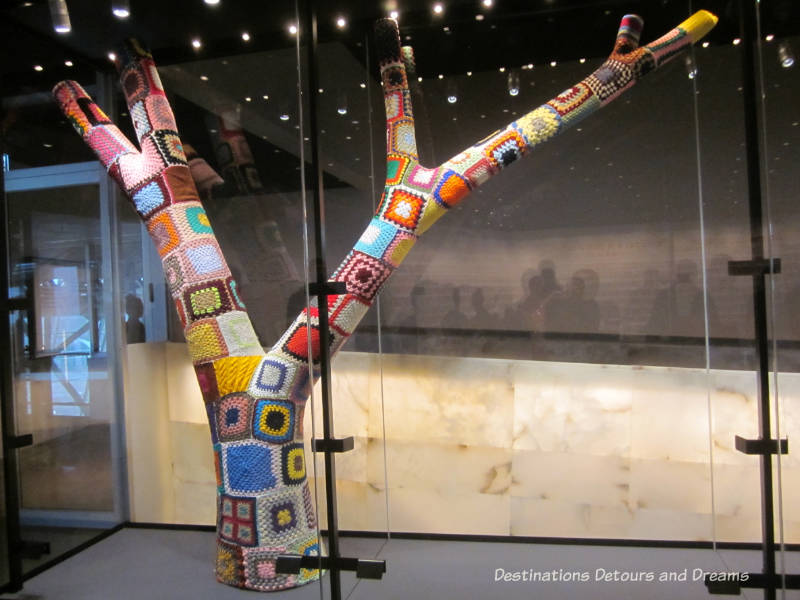
A group of grandmothers at Hillcrest AIDS Centre in Durban, South Africa yarn-bombed a tree with crocheted squares as a symbol of hope and a reminder of families in need. The tree in the above photograph is decorated with squares sent from those grandmothers. The squares were knit and crocheted onto the tree by Winnipeg members of Grand ‘n’ More, an organization working to improve the lives of grandmothers and AIDS orphans in sub-Saharan Africa. The tree is a symbol of solidarity and partnership.
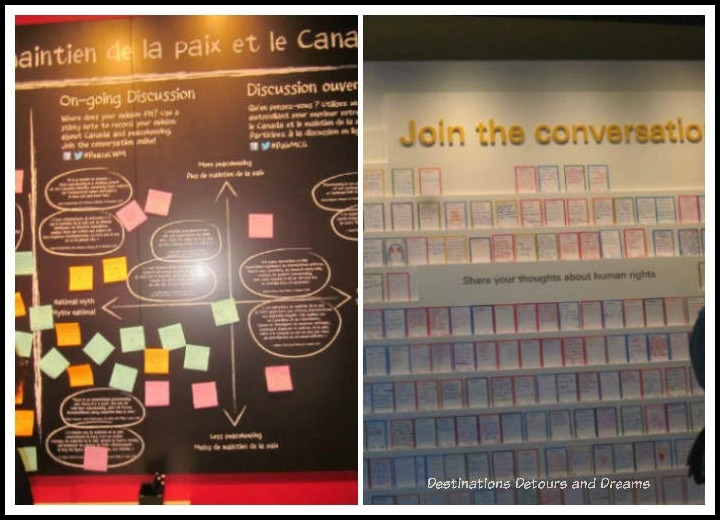
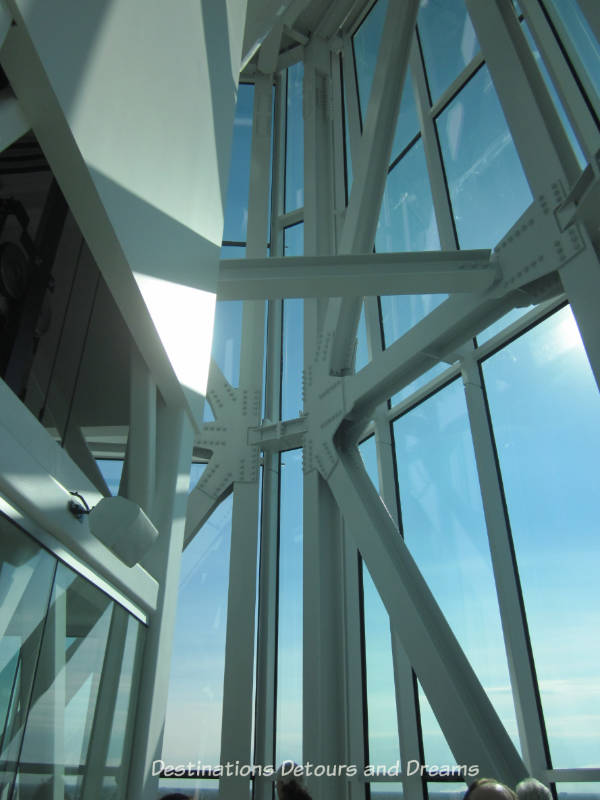
The Israel Asper Tower of Hope is named in honour of Israel Asper, the man who conceived the idea of a Canadian human rights museum. The Tower of Hope is a 23-story glass spire reaching into the sky. An observation deck offers panoramic views of the Prairie landscape.
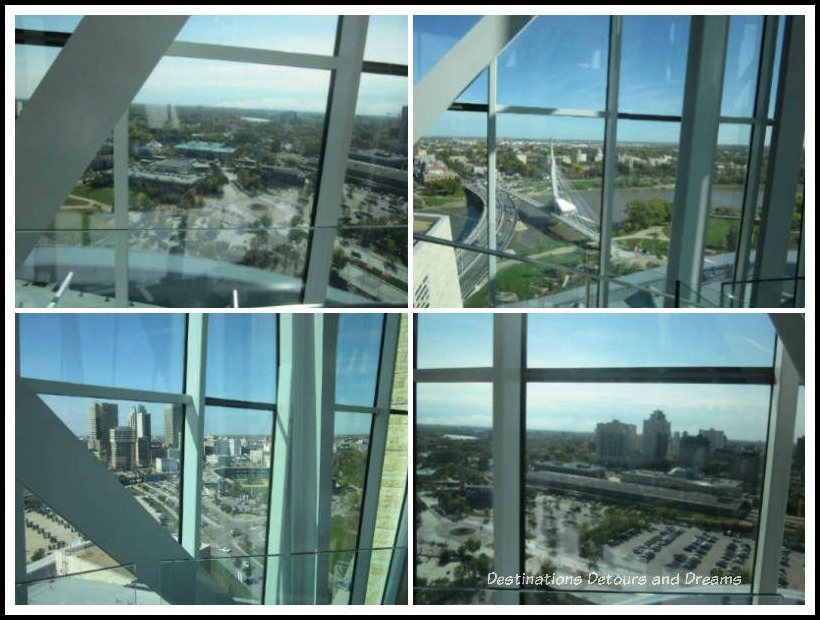
A couple of months after I took this tour, the remaining galleries opened, but it was almost a year later before I had the opportunity to visit them. You can read about my self-guided tour of those galleries here.
Guided tours of the museum are available. Visitors can also tour the museum at their leisure, self-guided via information on headsets or a mobile device application. The ramp through the galleries is wheelchair accessible. There is also elevator access to all the galleries.
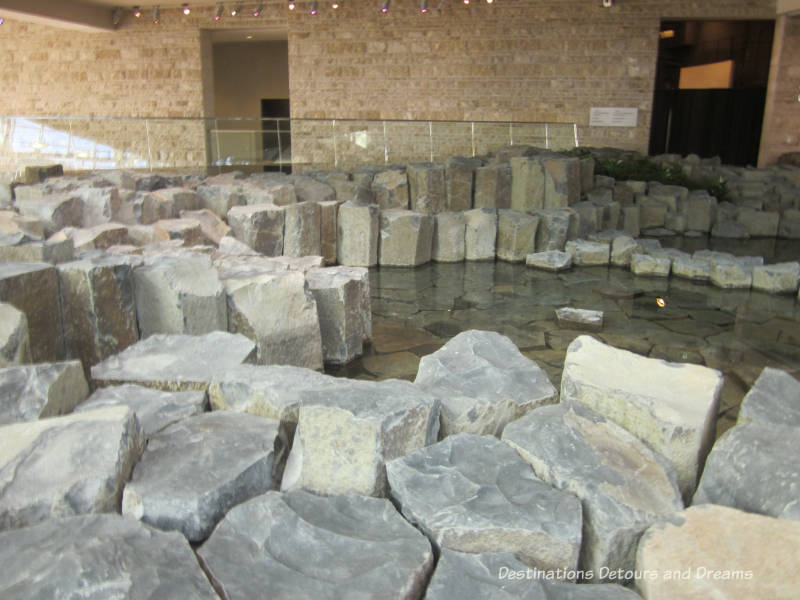
I have visited the CMHR several times since this first tour and written about the visits. Each experience was slightly different as I focused on a different area of the museum or had different instances of the human rights struggle resonate with me. In Canadian Museum for Human Rights, I examine the other galleries. In Human Rights: No Right Angles, I look at some stories with new perspective inspired in part by being told upon entry that the building had no right angles because the architect said you cannot box in human rights. In Human Rights Museum, I talk about the opening of the museum and the significance of its architecture.
Have you visited the Canadian Museum for Human Rights? Do you plan to? What do you think?
PIN IT
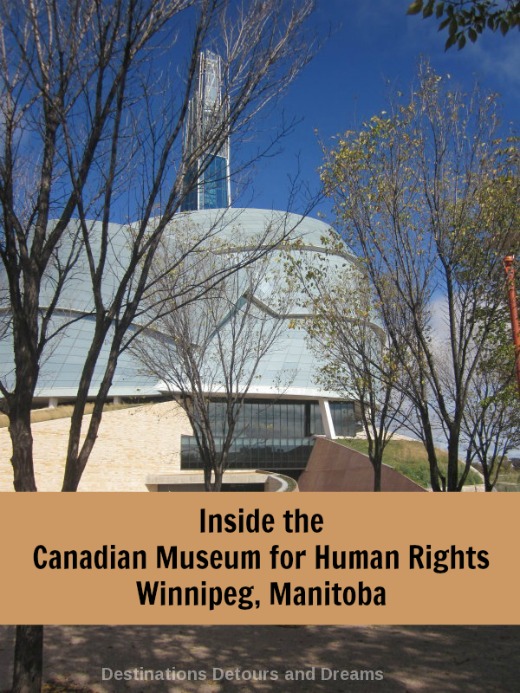
If you enjoyed this post, sign up for Destinations Detours and Dreams monthly e-newsletter. Get behind the scenes information and sneak peeks ahead in addition to a recap of the month’s posts.

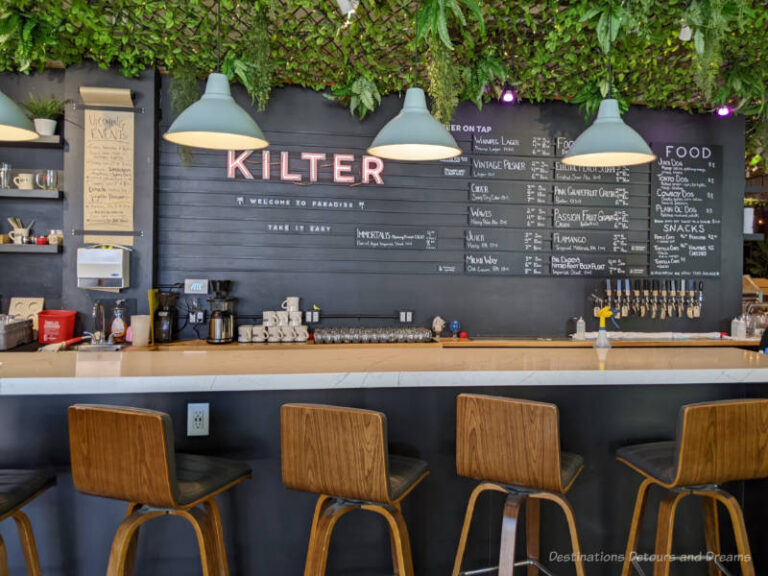


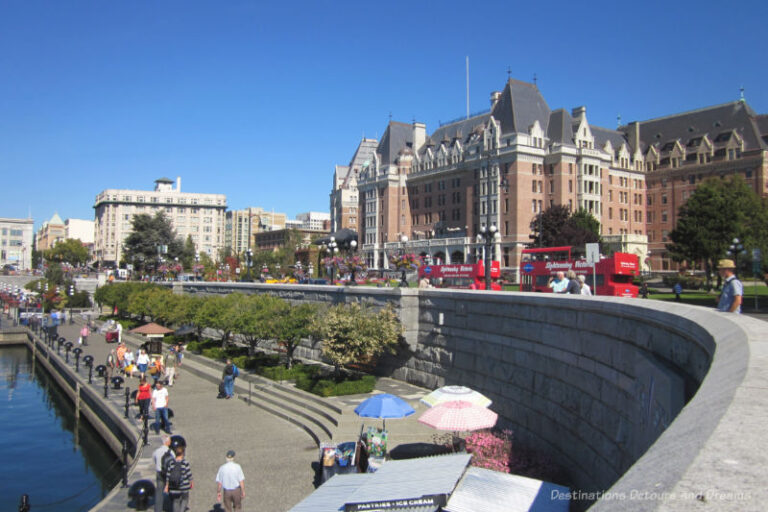
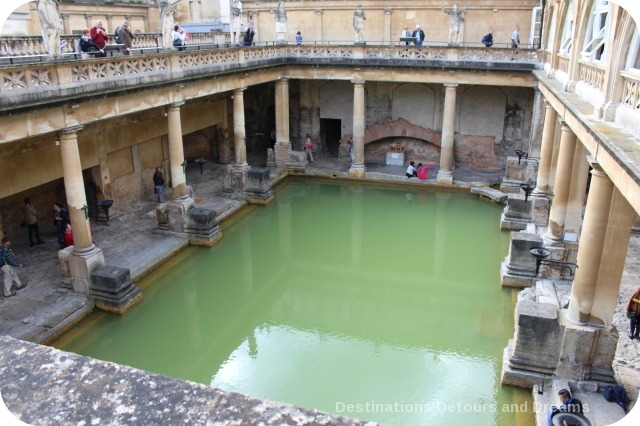
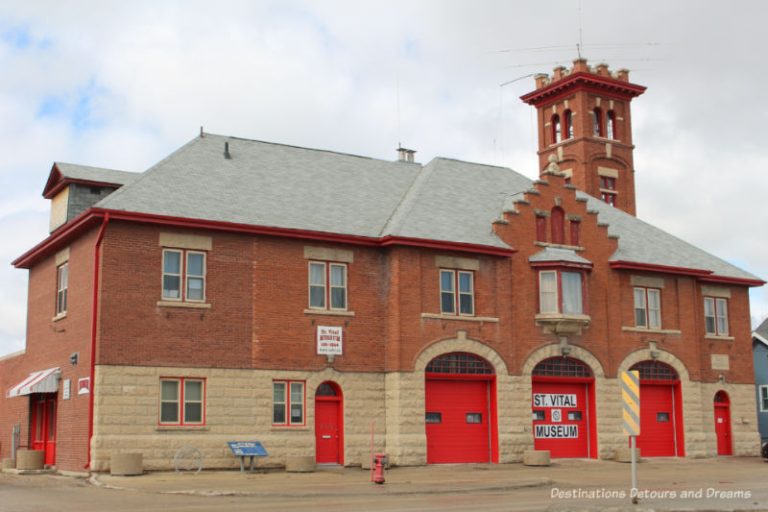
What a beautiful museum Donna. I’m not often in Canada but if I were, this would be on my list. In particular there are two things I like that you pictured. One is the wall to share personal thoughts of human rights. I saw something similar to this last year in a WW 2 airplane museum which I had the honor to take my father to. Second is this contemplation garden. Aaaaaah. And what a perfect start for it as you exit. Thanks for giving us this glimpse.
It is interesting (and thought provoking) to read the comments people shared on human rights. The museum makes you think. It’s hard to imagine someone going through without a reaction.
The museum is a wonderful gift to Canadians, though I’m not sure how many of them are aware of it. Good for you for spreading the word. My husband worked on the museum’s annual report that coincides with the launch and I know he thought the museum was brilliant. I hope to have the opportunity to visit it one day, or should I say, I’ll need to make the opportunity.
People in Winnipeg are certainly aware of the museum, but I don’t know how aware people are in the rest of the country. I agree it is brilliant and worth a visit.
What a lot of thought went into designing these displays. I’d love to visit it. I especially like how the ramps move you up “on a journey of hope with increasing levels of light” and the various sculptures that you described. What a wonderful place!
The ramps are incredible – a thing of beauty in themselves.
Great museum and pictures, Donna. Wish that human rights would improve all over the world. Even the West fails tremendously because of not being able to deal with, for instance, people smugglers. What happens to some of the people who pay such gangsters to get to the West is so horrendous we can’t possible imagine what it’s like. Many unaccompanied children migrants, for instance, end up as sex slaves in the West. Frequently because officials in the West are bribed to look the other way.
Thanks Catarina. I think all the world could do a better job protecting the rights of and respecting other human beings.
It is strange how we all belong to a group called humanity, but forget to treat each other as humans. Thanks for sharing this; I have enjoyed reading about the museum very much.
Thanks William. It doesn’t boggle the mind sometimes to realize how inhumane humans can be to each other.
Donna, I envy you the easy access to this marvelous museum and appreciate so much you’re sharing your photos and information. I hope that the news media will once again do a story on it when the museum is fully open in November.
I look forward to seeing the rest of the galleries.
I would absolutely visit when I’m in Winnipeg next. Some of the displays look really interesting – like the ballot box and tree made for World Aids Day. I love the design inside and like the interactive aspect of sharing one’s thoughts on human rights.
It’s a fascinating design with a lot of thought-provoking displays.
I love the “flip” idea. It seems as though whenever someone attempts awareness, there is someone else pointing out the flip side to it. It’s important to look at all the facets. What an interesting place and enviable attraction.
The “flip” gallery was intriguing. It makes one think about the good and bad of ordinary things, and realize answers aren’t always black and white.
Glad to read about this opening. I finally have a reason to visit Winnipeg after all these years, ha. I will want to know what makes this museum specific to Winnipeg? What is unique about this exhibit in this place, vs another Human Rights Museum in another city?
The museum bills itself as the first museum “solely dedicated to the evolution, celebration and future of human rights”. My understanding is that other human rights museums are either not solely dedicated to human rights as a concept or are focused on specific events. It is is Winnipeg because it is the vision and dream of Winnipeg-based businessman and philanthropist Israel Asper, who wanted it built in his hometown. His family were the driving force behind the museum’s creation. The specific location within Winnipeg is significant as a meeting place for thousands of years. Like any other place in the world, Winnipeg’s history includes abuses, struggles, and victories for human rights. In that way, it is not unique. Each place on earth has its own history to contemplate. The museum is not focused on the specific history and human rights issues of Winnipeg (although it does have a gallery dedicated to the Canadian journey of human rights), but on human rights as a global concept.
They did a great job of taking the concept of human rights and making it tangible. It reminds me of the Liberty Museum in Philadelphia. Well done and your photos are excellent!
I’d like to visit the Liberty Museum some day.
Donna you have completely sold me on this museum. I would love to go there. The galleries you describe are really interesting. Hopefully you can keep us updated when the unfinished parts are opened.
Because of my own schedule, I will not be able to get back into the museum until spring, but it is quite likely I will do an update then.
After spending a lot of time in Cambodia, Indonesia, China, South Africa, India, Burma, and many other places where human rights are non existent I am very sensitive to the subject and applaud any city or country that plays host to a museum that brings this issue to the fore. Thanks for sharing this Donna.
With only half the museum open as yet, I think it certainly does bring human rights issues to the fore. While many in the Western world understand there are serious human rights abuses in the parts of the world you mention, most of us are unaware of all the specifics and the history. I don’t know how much light the museum will shed on that. It is a sad fact there are so many abuses around the world, it is difficult to include all the stories in one museum. But it does touch on some and certainly encourages visitors to think about human rights in a global context.
A wonderful raison d’etre for a musum…I hope I get to visit one day. Thanks for the peek inside.
Thanks Irene. I hope you get a chance to visit.
What an amazing museum – so much going on, and with such meaning. Of course I loved the words : “Words are powerful. When people dare to break the silence about mass atrocities, they promote the human rights of all people.” I didn’t know that the crocheted tree began in South Africa – I’ve seen several in Australia and wonder if it’s done for the same cause.
I too think the “words are powerful” sentence is great. It would be interesting to learn what the connection was with the crocheted trees in Australia.
I had no idea this museum existed until reading your post, Donna. Thank you for such an informative and interesting tour!
Thanks. The museum just opened. It will interesting to see how well-known it does or doesn’t become.
Donna, I’m so glad you wrote this because your last post about the museum left me so curious about what’s inside! I love the water contemplation feature. Someday I’d like to see all this in person. Thanks for sharing!
meredith, if you get a chance to see it in person you should. It’s hard to fully describe the experience in words and pictures.
I echo what many have already said, what a beautiful museum. I do hope that it gets the visitation it deserves. It sure helps that you’re getting the word out about this amazing place. Like many, I do hope to have the opportunity to visit it someday.
Thanks Susan. Hope you do get to see it some day.
Last week when I read your post about Canadian Museum for Human Rights , I was thinking what will be inside this and here I have it.It was really nice to read and know about so many things, I really loved Brentwood Box. crochet tree is amazing work of art and the way Sculpture of ordinary things linked mobiles and then cobalt was amazing.
It was really a wonderful , a post full of information and I loved all the pictures. The pictures of city from the spiral glass tower of hope are amazing.
Thanks Anna. Some museums don’t allow you to take photographs, but when I asked at this museum, I was not only told it was okay, I was encouraged to take as many as I wanted. I loved the view from the tower. It had been overcast when I entered the museum, but cleared up and was nice and bright by the time I was up in the tower.
That’s great! I’m definitely putting this on my list of places to visit for my Canada trip!
Kayte
massmusings.com
What a moving experience for you. I loved the outlines of people writing “Welcome” at the beginning of your post because it seemed to sum up what the museum is all about: that we’re all part of the same human experience and should be welcome and respected. I have a love-hate relationship with tours as I find them full of information and hidden insights but a lot of times they move along much faster than I’d like. In a museum like this lingering is important.
This really is a museum to linger in. Different people will want to spend more time in certain spots than others. I look forward to going back when I can go at my pace. I would recommend tours in some situations – for people with limited time or for getting a general overview of the museum.
I am pleased to see this new Human Rights museum through your eyes, since I doubt I’ll be in Winnipeg anytime soon.
Thanks Carole. Glad I could provide you a glimpse into the museum.
Hi Donna! The Garden of Contemplation puts an exclamation point on the push to take action from what they’d taught in the museum. I enjoyed this post Donna! I don’t get to travel much so it’s fun to live vicariously through the adventures and discoveries of others. Thanks for taking me on vacation.
Angela, I like the analogy of the Garden of Contemplation as an exclamation point. Glad you enjoyed the post.
Thank you for the tour of this wonderful museum. I think most people could learn a lot about the history and important issue of human rights at this landmark. It looks like there is a lot to see and the creators did a great job putting everything together.
Glad you enjoyed the tour Michelle. There is a lot to see. What I’ve seen so far seemed well put together. I’m looking forward to see the rest of the museum and seeing how it evolves over time.